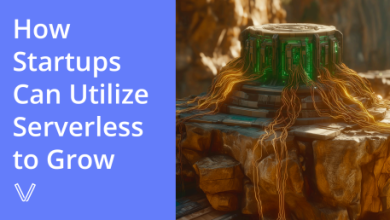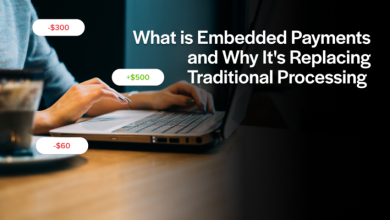The global workforce is shifting under the influence of artificial intelligence (AI) faster than ever. AI plays a strong role in the operations of supply chain management, as traditional planning methods cannot keep up with changing and unpredictable conditions. Instead of relying on spreadsheets, static forecasts, manual systems, or intuition, AI-based replenishment planning brings greater efficiencies and lower costs and provides organizations with greater resilience.
AI helps inventory-dependent organizations move from reactive tactics to predictive strategies. By utilizing intelligent algorithms, machine learning models, and real-time insights, replenishment planning solutions enable companies to anticipate demand variations, fine-tune stock positions, and make faster and smarter decisions.
Why AI is Important for Replenishment Optimization
AI in inventory operations represents a massive leap forward in adaptability, precision, and responsiveness. Here are some capabilities of AI that make it a crucial element of replenishment optimization:
- Predictive Intelligence: AI employs machine learning to study huge volumes of past and live data to predict demand with greater precision. This includes buying patterns, season-based shifts, discount campaigns, supplier reliability, and weather fluctuations.
- Instant Decision-making: Modern supply chains move at a fast pace, and AI matches that pace. These systems interpret incoming data as and when they arrive and instantly adjust inventory strategies to suit changing circumstances.
- Smarter Automation: From modifying reorder levels automatically to initiating stock replenishments, AI-enabled replenishment planning solutions can manage repetitive decisions with minimal human input.
- Complete Visibility: With AI-backed dashboards, leaders can instantly track how inventory moves, evaluate supplier performance, and predict upcoming demand patterns with confidence.
How AI Improves the Prediction Capability of Replenishment Planning Solutions
Replenishment today has become more complex due to a multitude of changing factors. Among them are perhaps unpredictable demand patterns, promotional spikes, supply chain interruptions, as well as constant volatility of trends in consumer preferences.
Amid these challenges, shifting from reactive, number-based adjustments to predictive requires AI-powered replenishment optimization solutions. Here’s how they help in predictive replenishment planning.
-
Better Data Management
Retailers gather enormous volumes of data that form the foundation of demand and replenishment planning. But since most of this data is unstructured and inconsistent, traditional modeling finds it difficult to identify demand patterns. This leads to the loss of valuable demand insights that could have shaped better decisions.
The outcome is faulty forecasts, inaccurate replenishment cycles, and widespread mismatching of stock over the store networks.
AI-driven replenishment planning solutions help to overcome this challenge. AI does not take a “gap” or irregular condition to be an exception but seeks them out automatically, and analyzes demand on a hyper-accurate basis, down to every SKU or store, instead of broader categories.
-
Hyperlocal Demand Prediction
Managing thousands of SKUs across hundreds of outlets turns grocery replenishment into a giant puzzle of volume and intricacy. The demand models of the past depended on fixed rules, which made them incapable of detecting or preparing for changing demand.
Moreover, actual grocery sales are heavily influenced by external factors, which include holidays, festivals, seasons, weather changes, and discounts. AI systems for replenishment optimization automatically make these external conditions distinct variables and establish demand closely on an individual SKU-channel basis for hyper-local stocking accuracy.
-
Decoding Promotional Demand
Promotional demand is one of the trickiest elements that traditional forecasting often misses. While planners usually predict demand “spikes” during promotional periods, they rarely account for the movement of consumer interest from regular products to discounted ones.
For example, a best-selling item during a promotion often diverts attention from other regular products on the shelves, sometimes from entirely different categories. Ignoring such demand migration can result in overstocked non-promoted goods and out-of-stock promoted items.
AI-based replenishment planning solutions consider these factors, the uplift, and the shift in demand for every SKU-location pair. This helps to produce highly accurate replenishment plans that maintain stock balance, reduce waste from overstocking, and increase promotional revenue.
-
Handling Supplier and Vendor Variability
Retailers require constant coordination with multiple vendors and service partners, often through various software systems. This constant switching among different management interfaces limits efficiency, even with automation in place.
Conventional inventory systems follow rigid templates that include days of stock, safety buffers, and similar one-size-fits-all calculations. They rarely allow retailers to input supplier-side realities such as delivery calendars, blackout periods, regional holidays, or fill rates.
On the contrary, however, AI-enabled replenishment optimization systems automatically import all of this supply-side data, resulting in a much more resilient, complete, and reliable replenishment plan that is aligned with the realities of supply chain operations.
-
Breaking Down Inventory Silos
A major obstacle for retailers is their too narrow focus on store stock when doing replenishment planning. This siloed approach neglects stock lying idle in warehouses or distribution centers.
AI-enabled replenishment planning solutions take account of every stock point, optimizing replenishment orders made to stores and warehouses alike. By this unified inventory management, stock gaps are diminished, stock turnover rates are improved, and wastage is diminished, ensuring that every product is in the right place and at the right time.
Bottom Line
Artificial intelligence will continue to power the next generation of supply chains. Through AI-enabled replenishment optimization, businesses can now utilize advanced, data-heavy platforms to gain clear predictive insights. The AI-based forecasting and auto-restocking mechanisms enhance accuracy and planning superiority, delivering both strategic stability and measurable returns.
Whether it’s agility in volatile markets, refined demand modeling, margin improvement, or sustainability alignment, AI-centric replenishment planning solutions outperform legacy systems. They help enterprises stand apart in the competitive world of modern retail and set new benchmarks for how supply chains operate.



